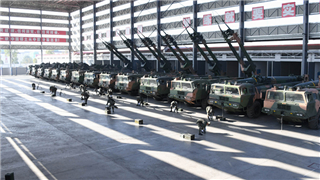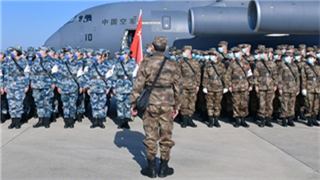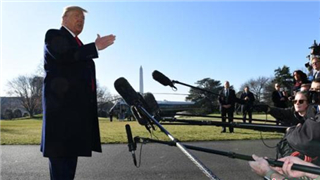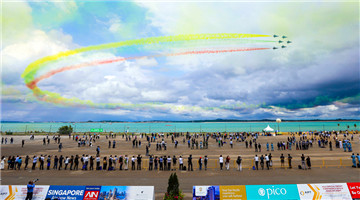
By Yang Xiyu
The current US administration put forth the “Indo-Pacific strategy” to tie the vast Pacific and Indian oceans together, for the main purpose of aligning the fast-rising India with America’s geopolitical strategy.
A few days ago, US president Donald Trump paid his first official visit to India, during which he took the opportunity to promote the “Indo-Pacific strategy” and strengthen the strategic cooperation between the two countries. It’s interesting, however, that the strategy is neither mentioned by the two heads of state in their meetings or public addresses, nor in the joint statement issued by the two sides afterwards.
This reflects the awkward position of the “Indo-Pacific strategy” that Washington has been touting in the last more than two years.
On the one hand, the US has invested huge amounts of military resources and made strenuous diplomatic efforts to promote this new strategy. Not only did it try to bring India into its circle of allies to form the quadrilateral consultation and cooperation mechanism among Washington, Tokyo, Canberra and New Delhi, but it also has renamed the US Pacific Command that has existed for several decades to be the Indo-Pacific Command.
It’s fair to say that the US is fully prepared to bind itself that controls the East Pacific, Japan that sits at the stronghold of the West Pacific, Australia that controls main routes on the South Pacific, and India, a South Asian military power that dominates the Indian Ocean, through the Indo-Pacific strategy. Washington attempts to control the vast Indian and Pacific oceans through this diamond-shaped framework of geostrategic cooperation.
On the other hand, New Delhi’s concept and dream of the “Indo-Pacific region” is different from Washington’s although it is happy to see a close connection between the two oceans. In the past two decades and more, India has attached greater importance to the Asia Pacific region and upgraded its Look East Policy (LEP) to Act East Policy (AEP). Being eager to merge into the regional cooperation in economic, political, security and other extensive domains, India has taken an active part in a series of regional cooperation mechanisms and organizations, including the APEC, East Asia Summit, ASEAN Regional Forum and Shanghai Cooperation Organization (SCO), so as to integrate the Indian Ocean and the Pacific Ocean more closely.
LEP is in India’s long-term development interest and the country’s constant efforts to push LEP and AEP have contributed largely to its rise in recent years. But we have to keep in mind that these policies are independent decisions made by India based on its own interests rather than to cater to America’s “Indo-Pacific strategy”.
That’s why New Delhi and Washington hardly ever come to terms when the latter is trying to tout its “Indo-Pacific strategy”. In particular, India, as a major developing country that always upholds the policy of independence and non-alliance, isn’t willing to tie itself into the geopolitical strategy of some other major country, especially with its rising strength and international standing. As Dr. Vijay Prashad, Director of Tricontinental: Institute for Social Research, pointed out in a recent article, “to remain the subordinate ally of the U.S. suggests that India will miss an opportunity to be part of a reshaped Asia”.
During President Trump’s two-day visit to India, the two sides seemed to have reached consensus on a number of topics, including America’s sale of advanced weapon systems to India, concluding their bilateral trade negotiations as soon as possible, and America supporting India to become a permanent member after the UN Security Council reform. Yet the US President came home empty-handed on the issue of pulling India into the US-led “Indo-Pacific strategy”, over whichTrumpis most concerned, as Washington couldn’t sway New Delhi’s vision for the region.
In fact, ever since the US launched and promoted the “Indo-Pacific strategy” in November 2017, it has met resistance from more sides than just India. Even the decades-long allies like Japan and Australia have remained cautious about the strategy and adhered to their own calculations, dreams and visions for the Indo-Pacific region.
Ironically, the concept of “Indo-Pacific strategy” originated in Japan, but the Japanese version is so different from the American one that after the US put forth the highly military version and changed its Pacific Command into Indo-Pacific Command, Japan no longer mentioned the word “strategy” when it emphasized the “Indo-Pacific” concept. What’s more, the other American ally Australia even called China, the country the Indo-Pacific strategy is designed to contain, as its “comprehensive strategic partner”, indicating the divergences between Washington and its allies.
Behindthe wave of economic globalization, the increasing economic integration of countries in the Indian and Pacific oceans is an unstoppable historical trend and the common aspiration of all countries concerned. They have their own visions for and pursuits in the ever more closely connected Indo-Pacific region, but it’s impossible to tie these vast oceans into America’s geopolitical strategy with a military bond.
(The author is a researcher at the China Institute of International Studies)
Disclaimer: This article is originally published on huanqiu.com and is translated from Chinese into English and edited by the China Military Online. The information, ideas or opinions appearing in this article do not necessarily reflect the views of eng.chinamil.com.cn.











